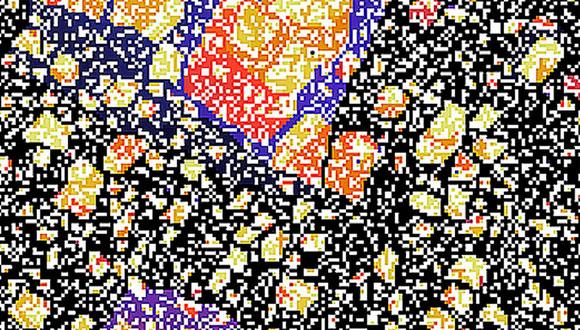Biological & Soft Matter Seminar: Modeling Programmable Shape-Morphing Dynamics in Liquid Crystal Elastomers
Robin Selinger, Kent State University
Zoom: https://tau-ac-il.zoom.us/j/88904888353?pwd=dDIwaXRxSjlsVElkR0dXdTNPTGhnZz09
Abstract:
Liquid Crystal Elastomers (LCE) undergo programmable shape-morphing in response to a change of temperature, illumination, or other stimulus. The resulting trajectory is programmed by patterning the nematic director field. We present examples of programmed shape change in which a sample of a simple geometry—e.g. a flat sheet, disk, or ribbon—deforms into a complex 3D shape. We have developed a GPU-based 3D finite element code to model the resulting shape evolution and give examples including “auto-origami,” that is, a sample that spontaneously folds on heating, and light-driven spontaneous oscillation[1]. One major challenge in LCE device engineering is the inverse design problem: find the nematic director field that morphs a sample to a complex desired target shape e.g. when heated [2]. Inspired by our recent collaboration with the Lavrentovich group [3], we investigate the inverse design problem for LCE surface coatings that morph to form complex topographies. We present a novel machine learning approach to address this inverse design challenge. As an example we model the design of morphing LCE suction cups to mimic the gripping capabilities of octopus suckers. We discuss plans to extend this approach to a broader class of LCE device geometries.
[1] Anne Helene Gelebart, Dirk Jan Mulder, Michael Varga, Andrew Konya, Ghislaine Vantomme, E. W. Meijer, Robin L. B. Selinger, and Dirk J. Broer, Nature v. 546, 632 (2017)
[2] H. Aharoni et al, PNAS 28, 7206 (2018)
[3] Greta Babakhanova, Youssef M. Golestani, Hend Baza, Sajedeh Afghah, Hao Yu, Michael Varga, Qi-Huo Wei, Paul Shiller, Jonathan V. Selinger, Robin L. B. Selinger, and Oleg D. Lavrentovich, Journal of Applied Physics 128, 184702 (2020)


